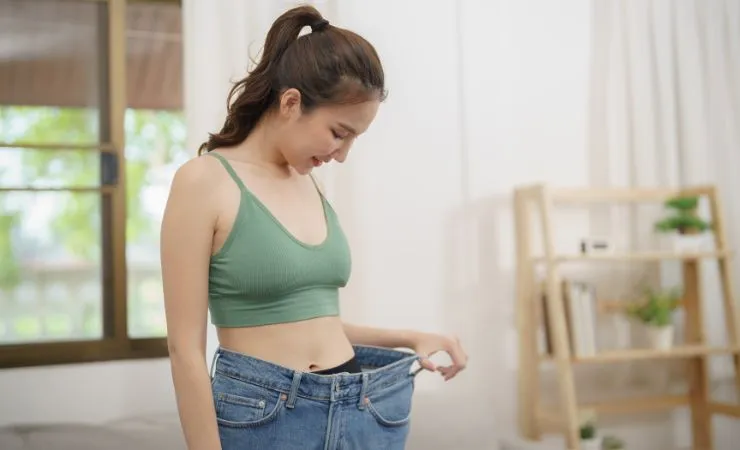The process of the ketogenic diet allows those with extra pounds to lose weight and provides enough energy for the body to function, both physically and mentally. Intermittent fasting or a low-carb diet causes the body to start burning stored fat.
Ketosis is a process that can occur spontaneously or be induced, as in the so-called ketogenic or keto diet, and has been associated with a reduced risk of cancer. In this sense, glucose is considered to be a food for cancer cells. Ketogenic diets have been found to offer benefits in the prevention and treatment of type 2 diabetes.
What is the Ketogenic Diet Process?
The current medical meaning of the word ketosis refers to a condition in which there is an abnormally high level of organic compounds called ketones in the body. According to research, in the absence of carbohydrates, fats are broken down for energy, producing ketone bodies in the liver. These are transported to the tissues to allow the body to function properly.

Ketosis occurs when the body begins to use fat as its primary source of energy instead of carbohydrates, especially when carbohydrates are not available in sufficient quantities. Possible causes include: activated lipid energy metabolism during pregnancy and childhood, low-carbohydrate diets, exercise or intense physical activity, lack of growth hormones, prolonged periods of fasting, a very high-fat diet, diabetes, and hypoglycemia.
Ketogenic Diet Aims to Burn Fat
The ketogenic diet known as the keto diet, the low-carb diet aims to burn fat. Carbohydrate intake should not exceed 10% of total daily calories. Due to this, the generation of ketone bodies should be increased.
Ketosis causes changes in the functioning of the body, which manifest themselves through various manifestations: headache, loss of appetite, bad breath, constant thirst, bitter or metallic taste, nausea and vomiting, increased frequency of urination, constipation or diarrhea.
The ketogenic diet can be very restrictive, so the body will suffer at some point, either during adaptation or if it is prolonged over time. Therefore, it is recommended not to extend it for more than 2-3 months, even with interruptions.
What are the Risks of the Ketogenic Diet?
Due to a metabolic disorder, when the body is unable to eliminate ketone bodies, blood concentrations of ketone bodies increase and metabolic acidosis can occur. According to studies, the consequences of ketosis: gastrointestinal disorders (constipation, nausea, gastroesophageal reflux), metabolic changes (increased serum cholesterol, hypocalcemia, hypomagnesemia, low carnitine, anemia, and mineral deficiencies), bone diseases (osteopenia, fractures), and kidney stones, pancreatitis.
The Ketogenic Diet is based on a high-fat, moderate-protein, but low-carb and low-carb diet. A typical keto diet consists of 80% fat, 15% protein, and only 5% carbs. Specifically, if you consume 2,000 calories a day, that means only 100 of those calories come from carbs (including healthy carbs like fruits and vegetables).
The goal of the ketogenic diet is to quickly introduce a state of ketosis, or to cause the body to switch from glucose to fat. The faster the state of ketosis is induced, the faster the body will start using stored fat and turn it into energy. Following a strict high-fat, low-carb diet can help you lose weight, but there may be side effects. Here are some of them!
1. Keto Respiration
When your body enters ketosis, it will begin to produce byproducts called ketones. These include: beta-hydroxybutyrate, acetoacetate, and acetone. Ketones are usually released from the body through your breath and urine, and their odor is unpleasant and different from your usual bad breath. You may notice a change in your breath within a few days to a week of starting the diet, but fortunately, the unpleasant odor will subside as your body adjusts to the new diet.
2. Poor General Condition
When you follow a low-carb diet, your body may not be getting enough fuel to produce serotonin, a brain chemical that helps regulate mood, sleep, and appetite, all of which affect your well-being. You may experience feelings of sadness and low energy while your body adjusts to the new lifestyle, but as your body adjusts to the diet, these feelings will gradually disappear.
3. Appetite Appears
Cutting carbs from your diet can cause your brain to release a chemical called neuropeptide-Y (NPY), which tells you to eat more carbs. When your body doesn’t get enough carbs, this chemical builds up, can increase your appetite, and increase your risk of developing disordered eating, such as binge eating and overeating. It’s not about lack of willpower, it’s more about your body’s response to food deprivation!
4. Keto Flu
Keto flu is not a normal flu, but a feeling of sickness that can occur at the beginning of the diet, caused by the process of adapting to burning fat for energy. Eliminating carbohydrates and entering ketosis can cause uncomfortable aches and pains, such as headaches, fatigue, nausea, or diarrhea. Fortunately, after your body adapts to the new diet, you will start to feel better and get rid of this “flu“.
5. The Yo-Yo Effect
The keto diet is famous for quickly shedding extra pounds, because the lack of carbohydrates helps eliminate water from the body and fat. When you stop consuming carbohydrates, excess water is eliminated, and the scale shows fewer pounds. The same thing happens with fat. In the long term, it will be difficult for people to stick to such a strict eating plan, and the moment the diet is abandoned, the yo-yo effect appears, namely the moment when the pounds will be deposited easily.
6. More Thirst
Don’t be surprised if you feel thirsty throughout the diet! One of the side effects that can occur during the keto diet is the feeling of thirst. The elimination of water from the body leads to the feeling of constant thirst. There are no recommendations regarding the quality and quantity of water recommended on this diet, but experts say that, in general, you should drink water until your urine is pale yellow.
Also Read: Best Hotels in Goa



